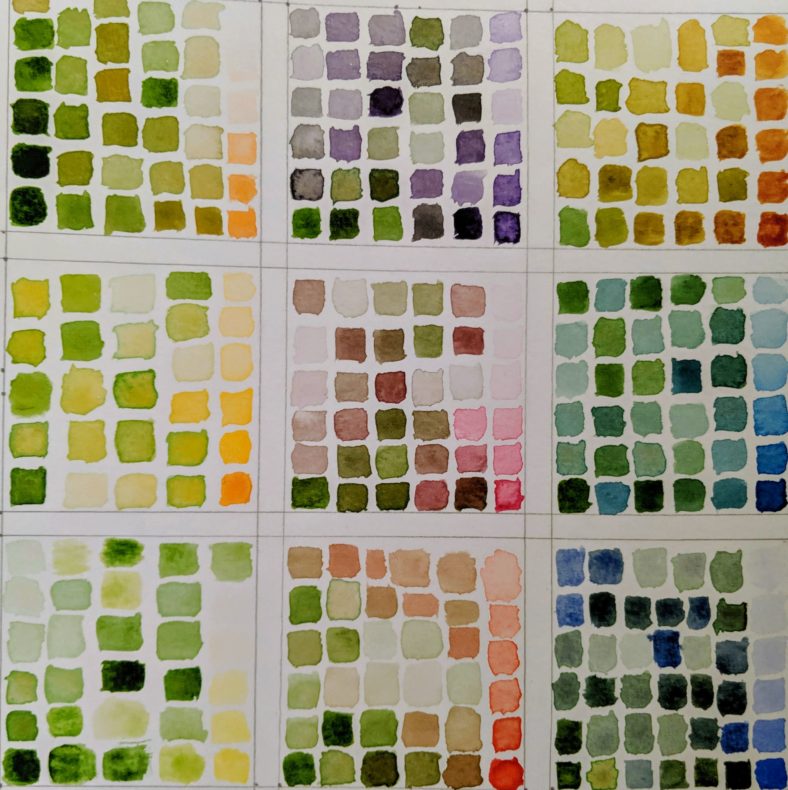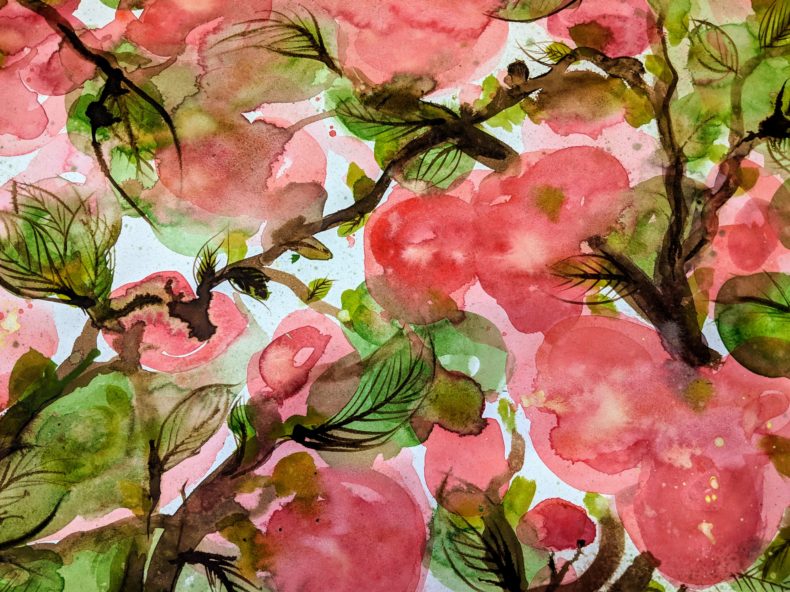
Summer is coming. In a few months the foothills surrounding my home will turn blonde, then grey. Streams will dwindle, then peter out. After fire season begins, everything will be covered in ash.
That’s the reality of summer in the Sierra Nevada foothills these days. But right now it’s spring, and what a spring. The mountains are loaded with snow and the rivers are running high. It looks like someone scribbled on the hills with a neon green highlighter. And the flowers, oh the flowers are as good as they get, entire hillsides glazed with golden poppies and shooting stars.
I celebrated the spring bounty last weekend by taking a painting class from an artist named Andie Thrams. Andie’s densely layered watercolors have always felt like home to me, probably because she works not far from the house where I grew up. Her work captures ecological niches in exquisite detail, spanning from the tangled grey pine forests of the Sierra Nevada to the coastal rainforests of Alaska.
For me, Andie’s paintings evoke the smell of pine sap, the feeling of running my fingers along smooth madrone bark and pressing my nose to wet moss. When I lived far away, just looking at Andie’s paintings made me homesick. So when I saw that she was offering a painting workshop, I signed up.
My mother joined the class, and a dozen other women, some of whom I have known since I was little. I used to play with their daughters, making forts under manzanita bushes in their backyards. As I settled down beside the women I realized that I am roughly the same age – or a few years older — than they were when I was born. Although I hope to start my own garden soon, I have no idea whether I’ll have my own daughters, or any children. It’s easy to dream in spring, but harder to imagine in the smoky summer.
We pulled out our paints, and Andie showed us how to arrange our palettes and mix our colors. We learned the difference between orangey red and bluish rose, and how the most gorgeous grey skies can be obtained by mixing ultramarine violet and burnt sienna. Silvery blue-greens are common in the foothills because they reflect more light than deeper hues, protecting plants from intense heat, Andie told us. To capture these paler greens, she said, we’d best start with a green paint called oxide of chromium – not sap green, which is better suited to grassy, tropical hues.
“Look at the color of the sky when you get frustrated,” Andie told us. It was easy to get frustrated when my painting went to mud with a brushstroke. But paying such close attention to color sharpened my perception, and it felt good to practice my ancient, innate ability to distinguish millions of hues. (While most human retinas can only detect red, green and blue light, neurons in the visual cortex use that information to make millions of different color combinations, producing a perceptual rainbow.)
Most scientists agree that color vision evolved to help us notice what’s important to survival: lush greenery, ripe red fruit, the flush of sexual arousal. Colored light can also directly affect our bodies, causing the heart to beat faster and triggering the release of hormones like cortisol. On the second day of our class, Andie took us to a trail into a sloping meadow covered in blue flowers. As I looked at the blossoms, the color oscillated rapidly between blue and purple. They seemed to vibrate, and I did too.
Back in class that evening, I took a hard look at a branch with bright pink blossoms. One of these plants grows outside my kitchen window, but I had no idea what it was, so I just called it “pink bush.” It was Chaenomeles speciosa, a flowering quince, a classmate told me. The flowers aren’t pink, but a tricky mixture of orange-red-rose. The color made me feel giddy, outrageous, hopeful. It reminded me of a children’s book called “A Chair for My Mother,” in which a little girl, her mother, and her grandmother slowly fill a jar with coins. They want to buy a big, plush armchair covered in big, plush roses. Little by little, they fill the jar. And they buy that chair. And it’s perfect.
I thought about the chair, and the mothers in my painting class, and my someday-maybe daughters. I thought about the garden I hope for, and the quince tree already outside my kitchen window. I dipped a fat paintbrush into the scarlet-pink pigment.
At first I was afraid to make a mess. The paint seeped and flowed over the wet paper, out of my control. But the splotches slowly took shape, developing on the paper like watercolor embryos. They grew branches and leaves. Little by little, they bloomed.

Oh Emily, your words brought tears to my eyes… and just when I was wondering about all the work involved with teaching, you have reminded exactly why I love sharing all this! Thank you for coming, and for sharing your thoughts and feelings and beautiful colors!
Ms Emily, I see you, and your mom, in the quince painting. Lovely article. Xoxo Auntie Wendy
As I struggle through painting classes and color theory, your story restores my spirit to carry on and just see what flows from my brush. Often times I’m surprised at what appears but I’m never dismayed at the process. How special to share this with your mom.
This article makes we want to retire early and get busy painting. Working two jobs doesn’t leave much time but I’m aching to paint plein aire. Thank you for sharing!